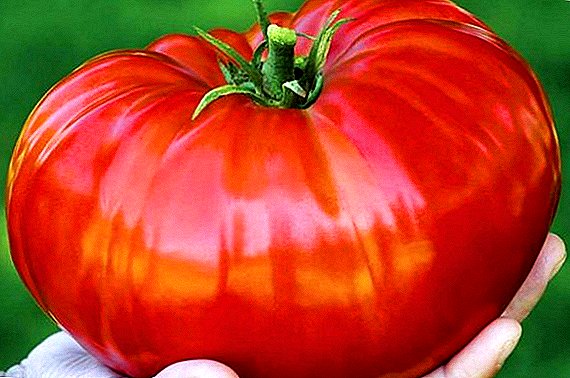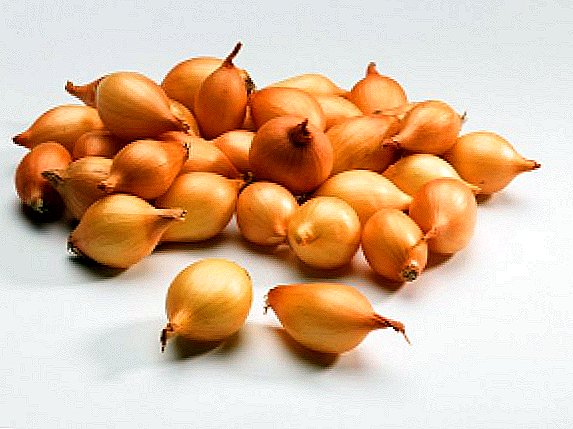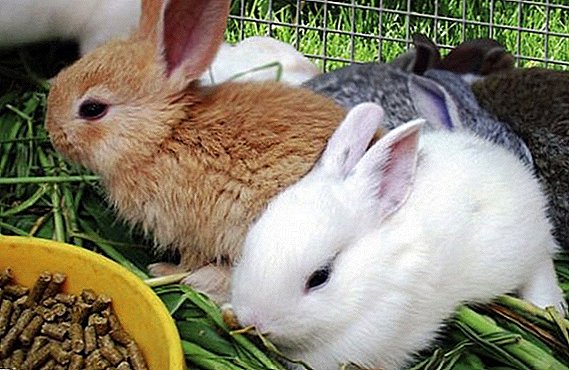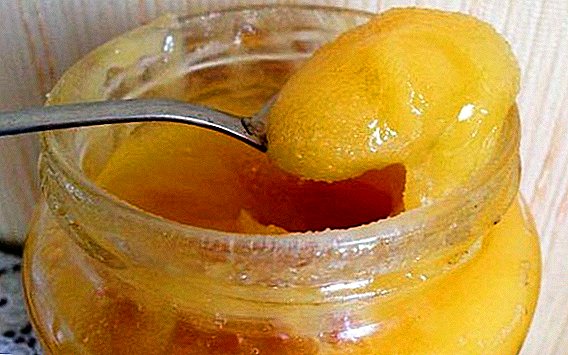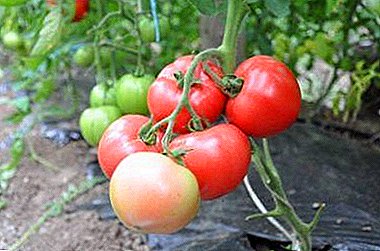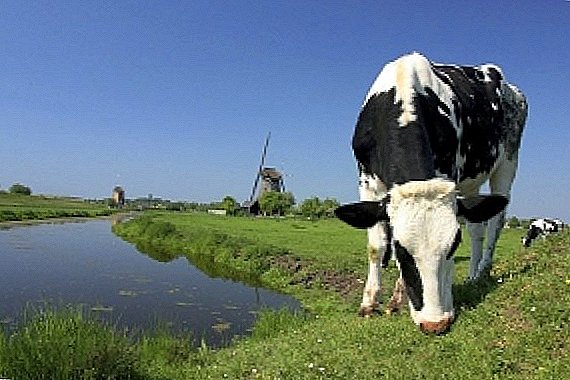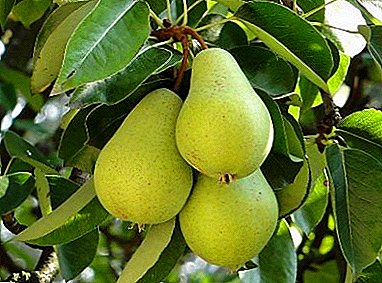
Pears due to the attractive taste, yield and beautiful inflorescences, pleasing us with their fragrance during the flowering period, are very beneficial for industrial breeding in large gardens and on summer cottages.
In pursuit of the ideal qualities of this tasty, sweet and healthy fruit, scientists have developed many of the most varied pear varieties that are optimally suited to the climatic conditions of a particular area. One of these original varieties is pear "Memory Zhegalov" - description of all qualities of the variety, photos and reviews of gardeners later in the article.
Its creators tried to invest in their offspring not only excellent qualities, but also a great respect for the memory of an outstanding Russian breeder, who did a lot to spread this heat-loving culture in the harsh geographic latitudes.
What kind is it?
 Variety pears "Memory Zhegalov" is a typical self-infertile fruit plant. This means that this culture cannot normally fertilize with its own pollen.
Variety pears "Memory Zhegalov" is a typical self-infertile fruit plant. This means that this culture cannot normally fertilize with its own pollen.
For this reason, a gardener should not use trees of this variety when laying a garden plot. Even despite the particularly warm attitude towards him.
Thus, for efficient pollination of pears of the “Memory of Zhegalov” pears, pears of other varieties are required, more precisely, their pollen.
The negative point in this case is that for the transfer of pollen from the tree pollinator to the specified variety, certain favorable weather conditions are needed, during which the bees actively fly out.
With prolonged deterioration of the weather, insects remain in their hives, which can have a bad effect on the scale and timing of the ovary.
The best pollinators of the pear “Memory of Zhegalov” are considered to be the varieties “Bergamot Moscow” and “Favorite Yakovlev”.
The described culture also applies to fruit trees with autumn fruit ripening (late autumn variety). According to agrotechnical standards, its pears become ripe and fully ready to be picked. in the third decade of September.
Wherein they have excellent keeping quality - they can be stored without losing their basic taste qualities from 100 to 120 days, that is, until about January-February.
The autumn Rossoshanskaya, Karataevskaya, Vernaya, Kupava and Moskvich also belong to the autumn varieties.
Breeding history and breeding region
 This variety was bred by scientists breeders on the basis of Moscow Agricultural Academy. KA Timiryazev.
This variety was bred by scientists breeders on the basis of Moscow Agricultural Academy. KA Timiryazev.
"Memorial" the pear is named in honor of the outstanding Russian Soviet scientist-geneticist, professor Sergey Ivanovich Zhegalov (1881-1927).
His persistent works on the basis of the famous "Timiryazevka"the first specialized department of breeding in Russia was created, methods of mass crossing of vegetables and fruit crops were developed and improved.
To obtain pears "Memory Zhegalov" he used the system of crossing varieties "Forest Beauty and Olga.
In 1990, the variety was included in the state variety test program. Subsequently, a pear variety of Memory of Zhegalov, photo of fruits, description and reviews of which are given below, was recommended for industrial distribution in the Central agricultural region of Russia.
In the Central Region, varieties such as the Noyabrskaya, Marble, Autumn Yakovleva, Larinskaya and Tatyana are successfully grown.
Description varieties Memory Zhegalov
Description of external characteristics that distinguish from other pears, pear variety Memory Zhegalov:
Tree. As a rule, has an average height, tall individuals are less common. The bark of the plant is different gray or dark gray.
Crown, branches. When the specified plant is still young, it forms a crown in the form of a distinct funnel. When a pear reaches the state of full and regular fruiting, its crown acquires a characteristic rounded (usually oval) shape.
 The crown is formed from skeletal branches located to the trunk almost vertically, with a slight slope. The density of the treetops is estimated as average or below average (relatively rare).
The crown is formed from skeletal branches located to the trunk almost vertically, with a slight slope. The density of the treetops is estimated as average or below average (relatively rare).
The bark of the skeletal branches is painted in a light green color. The krone grows to maximum volumes quickly enough.
Shoots. Brown shoots with mid-length internodes are somewhat curved. Their thickness and length are estimated as average. Pubescence on the processes is practically not observed.
Very early on the shoots appear dark brown cone-shaped buds, with a slight deviation from the branch.
On the surface of the shoots in medium quantities are small in size, convex lentils. In general, the tree of the variety "Zhegalov's memory" shows a relatively weak side-formation ability.
Leaves. The standard mid-size, medium-thick sheet has an elongated rounded (oval) shape, with a characteristic slight curvature along the central vein. The predominant color of the leaves is dark green.
The surface of the leaf plate, as a rule, is elastic-smooth to the touch, with a characteristic leatheriness. The pubescence on both the upper and the lower side of the leaf is absent. The edges of the leaves are serrate. Leaves are kept on the branch by means of mid-long petioles.
Inflorescences Formed in the form of a scabrous brush on average of 5-7 flowers. For each flower cupped silhouette characterized by medium size. The white petals have solid edges, while they are quite tightly closed. The buds are also white.
 Fruit. They are characterized by average values and average weight from 120 to 130 g. Its shape resembles an egg.
Fruit. They are characterized by average values and average weight from 120 to 130 g. Its shape resembles an egg.
The skin of the fruit is smooth, rather thin, the texture is glossy, sometimes with a weak touch of oiliness.
The dominant color of the fruit is yellow-green, with a faint, somewhat diffuse reddish tinge. There is a slight orzhavnost skin.
Pulp different whitish or light yellow color and abundant juiciness.
Its consistence gentle, with average grain, makes the melting oily feeling in a mouth. Inside the fruit contains from 5 to 10 dark brown sunflower seeds of medium size.
Peduncleon which the pear is held, of medium length and medium thickness. Attractiveness of the appearance of the fruits of the variety "Memory Zhegalov" estimated at 4.3 points (on a 5-point scale).
A photo





Specifications
Pears of the variety "Zhegalov memory" are characterized by several features that make them very beneficial for industrial cultivation in large and small horticultural farms.
First of all, about the taste conditions. The fruits of this species are very refresh and tone up well, are an excellent vitamin and flavor additive to many complex dishes.
These benefits are achieved by Exquisite sweet taste with accented pleasant sourness. On the excellent taste "superimposed" a very elegant aroma of fresh fruit.
Such varieties of pears demonstrate great taste: Rogneda, Krasulya, Lada, Dekabrinka and Ilyinka.
The main chemicals in the fruit are in the following proportions:
| Composition | amount |
|---|---|
| Sahara | 9,3% |
| Acids | 0,41% |
| Soluble substances | 14,2% |
| Dry matter | 16,5% |
| P-active substances | 211 mg / 100 g |
 On a 5-point scale of tasting attractiveness, the pear “Memory of Zhegalov” received from specialists score 4.3 points.
On a 5-point scale of tasting attractiveness, the pear “Memory of Zhegalov” received from specialists score 4.3 points.
The fruits of this culture are good for their universal purpose.
In other words, they are actively consumed both in the fresh and processed form as a raw material for the production of various compotes, marmalades, jellies, jams, etc.
Also this fruit plant is rated as high-yielding culture. In particular, under favorable climatic and weather conditions and with proper tree care, it regularly gives in the harvest season at least 40 kg.
A garden planted with a variety of “Memory of Zhegalov” gives from one hectare on average to 122 centners of crop.
The high productivity of a pear contributes to its early precocity. She begins to give her first harvests. 3-4 year after planting the seedling.
In addition, the big advantages for the commercial cultivation of a variety are its high degree of winter hardiness, good resistance to extreme weather conditions, poor shedding of pears and their excellent transportability.
Pears are considered to be high-yielding varieties: Sverdlovchanka, Yanvarskaya, Chudesnitsa, Bere Bosk and Dushes.
Planting and care
As with virtually all other pear species, when choosing a place for planting a seedling of the variety “In Memory of Zhegalov”, it is necessary to observe a number of rather stringent conditions.
In particular, a suitable site should be well illuminated by sunlight, be in a quiet, if possible windless part of the garden, potentially not subject to flooding by groundwater.
 It is also very important that in this place the soil be black earth, sandy, loamy or be a mixture of the above components.
It is also very important that in this place the soil be black earth, sandy, loamy or be a mixture of the above components.
When digging the planting hole, it should be assumed that the roots of the seedling should fit freely in it. Usually it is enough to dig a pit with a depth of 1 m and a diameter of 60-70 cm.
Before planting, it is necessary to prepare the ground for backfilling of the root system.
Traditionally, it is prepared from the soil extracted when digging a hole, to which is added 2 buckets of humus and sand and one glass of superphosphate. It is not out of place to pour a bucket of water with 2 glasses of fluffy lime dissolved in it before the landing. After that, the pit should be allowed to stand for a week and a half until the date of planting.
At the time of planting a tree, its roots fall asleep in such a way that above the ground for 6-7 cm its root neck protruded (the place of transition of the root to the stem). If, after watering with water, this parameter was not sustained, it is recommended to repeat the landing.
After backfilling the roots and tamping the soil around the trunk, pristvolny circle of low earthen shaft, laid a radius of 35-40 cm
To the funnel thus formed Pour 2-3 buckets of separated water. Sprinkle the place with mulch (dry humus with sawdust).
Proper tree care is regular soil loosening around the tree, timely applying organic and mineral fertilizers, pruning too overgrown and dry branches.
Diseases and pests
 As for the main diseases prevalent among fruit crops, here the variety “Memory of Zhegalov” shows itself from the best side.
As for the main diseases prevalent among fruit crops, here the variety “Memory of Zhegalov” shows itself from the best side.
Anyway, he is very Good against major fungal diseases, including such a serious ailment as //selo.guru/ptitsa/bolezni-p/gribkovye/parsha.html.
As you can see, the described pear has a number of excellent qualities.
Disease-resistant pear varieties: Skorospelka from Michurinsk, Fairy Tale, Silent Don, Moscow Early and Svarog.
However, in order for them to appear in all its glory and benefit to man, the gardener will have to work hard. However, it is worth it!




